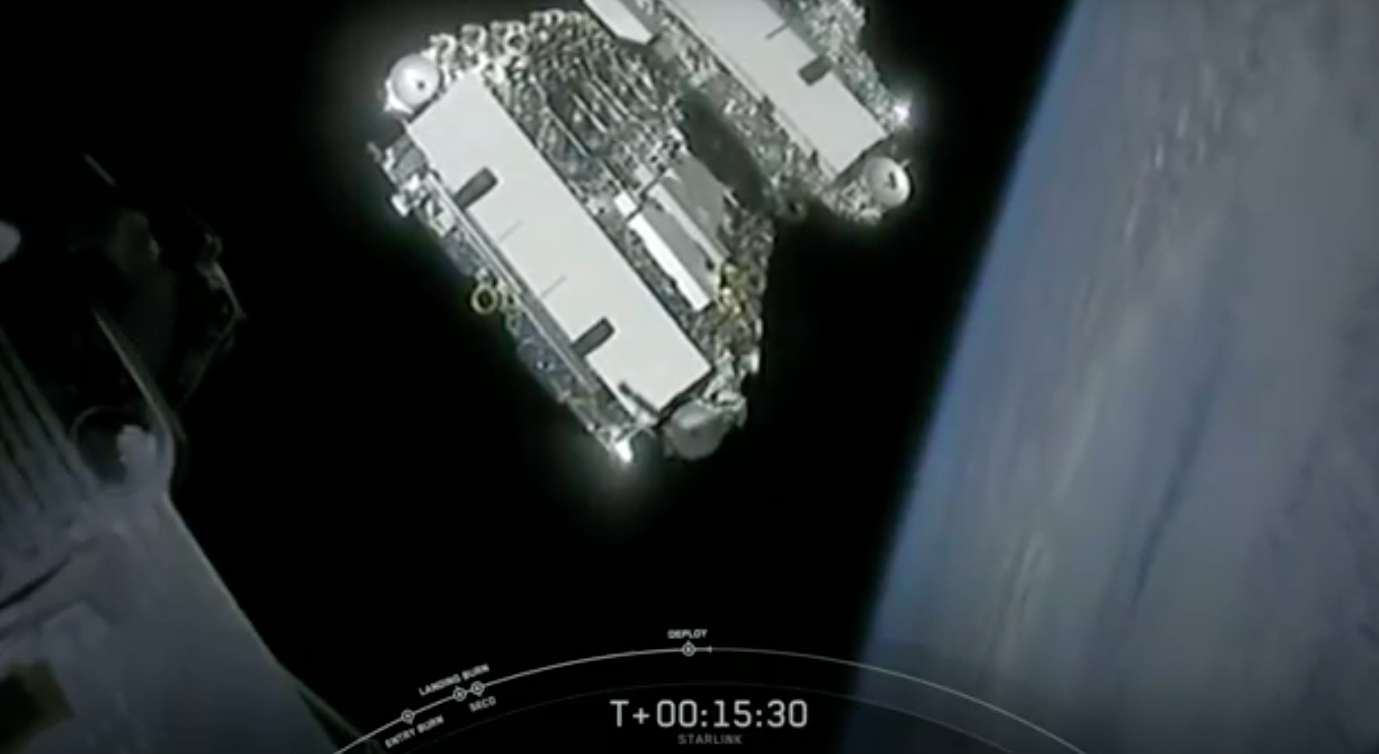
CAPE CANAVERAL—A SpaceX Falcon 9 lifted off from Kennedy Space Center’s Launch Complex 39A on April 22 to deliver a seventh batch of the company’s Starlink communications satellites into low Earth orbit.
The 3:30 p.m. EDT launch was the second Starlink launch since efforts began in mid-March to stem the spread of the novel coronavirus. Kennedy remains one of only six NASA centers that are open for mission-critical work and to tenant organizations.
Twelve other NASA facilities across the country have been closed due to health concerns from the COVID-19 pandemic.
As a defense contractor, SpaceX has been spared from widespread shutdowns of its Hawthorne, California, headquarters. SpaceX operations in Florida, where the company is preparing for a May 27 flight test of its crewed Dragon spacecraft, and in Texas, where engineers are building a fourth Starship prototype, are continuing.
Coronavirus concerns prompted the U.S. Space Force two weeks ago to postpone the SpaceX launch of a GPS III satellite from Cape Canaveral from late April to June 30. The Space Force is reviewing additional national security space missions on a case-by-case basis.
Meanwhile, SpaceX on April 22 resumed launching its own Starlink satellites, which are designed to provide high-bandwidth, low-latency internet services worldwide. Sixty more spacecraft joined a fleet that now numbers about 420 members.
The newcomers were deployed from the Falcon’s upper stage over the North Atlantic Ocean about 15 min. after liftoff. The booster’s first stage, flying for the fourth time, nailed its landing on a SpaceX drone ship stationed off the Florida coast.
The rocket also used a previously flown payload fairing, which was jettisoned once the second stage flew beyond Earth’s atmosphere. SpaceX will attempt to fish out the fairing from the ocean after it splashes down for a possible third flight.
The latest additions to the Starlink network come as SpaceX eyes a new operational plan, documents filed April 17 with the Federal Communications Commission (FCC) show.
SpaceX is requesting approval to shift orbital slots for 2,825 spacecraft from 690-823 mi. (1,110-1,325 km) altitudes to 335-354 mi. The inclinations of the spacecraft also would change from 53.8, 70, 74 and 81 deg. to 53.2, 70 and 97.6 deg. relative to the equator, the FCC filing shows.
Unchanged are SpaceX’s plans to operate an initial 1,584 satellites at 341-mi.-high orbits, inclined 53 deg. relative to the equator.
SpaceX said lowering the altitude of the overall constellation would provide for “low-latency broadband to unserved and underserved Americans that is on par with service previously only available in urban areas.”
SpaceX has indicated it intends to compete against terrestrial internet providers and possibly other companies for $16 billion that the FCC has earmarked to improve internet service in rural areas over the next 10 years.
In it FCC filing, SpaceX also said Starlinks’ lower orbits would help the orbital debris environment as any failed satellites would be able to re-enter the atmosphere sooner. Flying closer to the ground would also cut the amount of power the spacecraft need to communicate with ground stations, reducing radio interference with other satellite and terrestrial networks.
SpaceX has already received FCC approval to shift the orbits of its first 1,584 satellites from 714 mi. to 341 mi. and configure the constellation in different orbital planes.
The company said it is on track to begin providing commercial Starlink services in the U.S. and Canada this year and roll out global coverage in 2021.
The April 22 launch marked the 84th flight of a Falcon 9, surpassing United Launch Alliance’s Atlas V to become the most flown operational booster in the U.S. fleet.






Comments